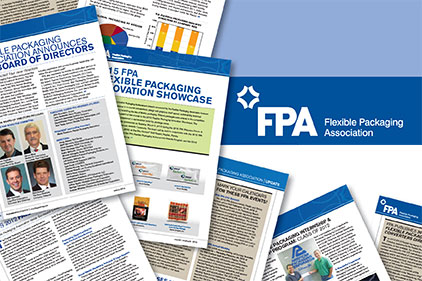The Flexible Packaging Association (FPA) is very proud of the long history it shares with Flexible Packaging magazine. The two organizations not only share a name, but also share a mission to serve the flexible packaging industry and provide the most up to date, relevant information available that benefits the industry.
A Little History
Independent Publishers came to FPA back in 1998 with the idea of providing a magazine specifically for this industry – with the primary audience being flexible packaging converters. Independent Publishers took all of the financial risk and FPA provided moral support and the names of people within the industry who would benefit from such a magazine. Fast forward fifteen years and a few publishers later, and the relationship between the magazine and the association is stronger than ever; and the mission remains the same – providing the best information available to the industry.
As the magazine celebrates its 15th anniversary, FPA celebrates its 63rd anniversary! It is hard to believe that before 1950, flexible packaging as we now know it did not exist.
The Astounding Evolution of Flexible Packaging
Within a year of its founding, FPA had 50 members generating a total annual volume of $150,000,000 in flexible packaging. Today, the industry has about 400 converting companies with annual revenues of $27.7 billion.
In the ‘50s, flexible packaging was made from paper and paper based materials and only one clear film, cellophane. Today, plastic, paper, foil, and multi-material are very important parts of the industry.
Flexible packaging has evolved into “designer” packaging — each package specifically designed to meet the varying needs of the product it holds. The success of this industry is related to innovation and technology, and for flexible packaging the two are dependent on each other.
| Flexible Packaging Landscape in 2013 |
|
• $27.7 billion annually in sales in the US flexible packaging industry
|
The progress in flexible packaging has been a constant; some advancements more noticed than others by consumers. The “lightweighting” and source reduction that has taken place is nothing short of amazing. As an example, the weight of a candy bar’s flexible package was reduced by 60 percent from 2005 to 2011; and barrier property enhancements have enabled the use of 50 percent less material for some packages.
One “ah ha” moment for me when I first started in the industry, was the wrap around chicken pieces – I was touring an FPA member’s manufacturing facility and they pointed out the “new” materials that were being produced to wrap poultry – the comment from the plant manager was “haven’t you notice that your chicken package doesn’t leak anymore?” I had not really noticed that on a conscious level, but of course it was true and an expected and assumed improvement. Said another way, I was a consumer that had taken the package for granted – and I had been involved with packaging for many years.
Since Flexible Packaging magazine was first published in 1999, we have seen many flexible packaging innovations. Some of my personal favorites (because they have made my life easier) are the microwavable pouches that enable me to steam my vegetable in the package; the zippers and other reclosures that allows me to open and reseal many of the things I purchase; the pour spouts that enable mess-less dispensing; the increased barrier properties that extend shelf life and reduce the amount of food waste; the “jump off the shelf” graphics that let me find exactly what I am looking for on the retail shelf; and, of course, the whole new food category that was facilitated by flexible packaging – my ready-to-eat salad in that amazing bag with the perforations.


_web.jpg?height=200&t=1645110028&width=200)

